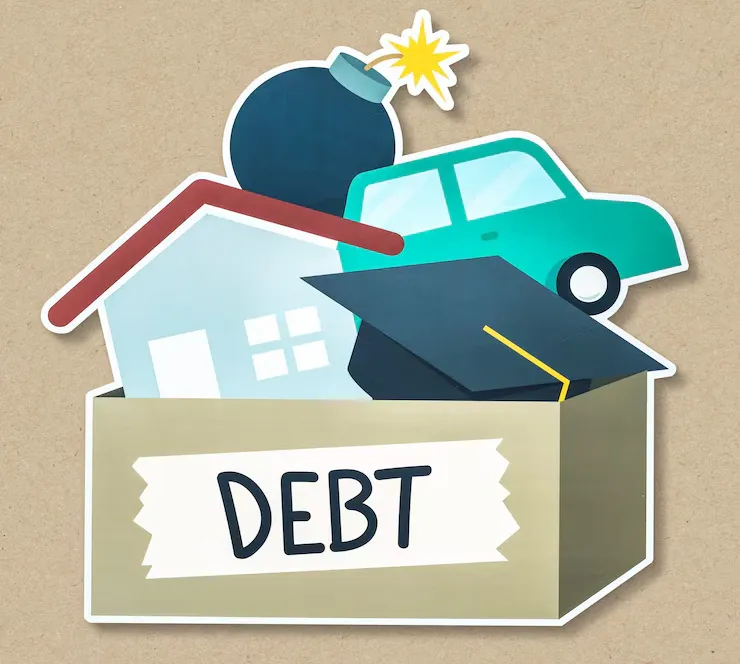Credit card debt can quickly become overwhelming, especially with high interest rates and mounting fees. Credit card debt settlement offers a way to negotiate a lower payoff amount with your creditors, providing relief from the full balance while allowing you to regain control over your finances. If you’re considering this route, understanding the debt settlement process can help you navigate it effectively. Here’s a step-by-step guide to help borrowers successfully manage credit card debt settlement.
1. Evaluate Your Financial Situation
The first step in debt settlement is to take a close look at your financial circumstances. Create a budget that outlines your income, expenses, and current debt obligations. Understanding your monthly cash flow and overall financial situation will help you determine how much you can realistically afford to offer in a settlement. Remember, creditors will likely want to see evidence that you’re struggling financially before agreeing to a reduced payoff amount.
2. Consider Other Debt Relief Options
Before jumping into credit card debt settlement, consider whether other options might be more appropriate for your situation. Debt consolidation loans, credit counselling, or a debt management plan may be alternatives worth exploring, especially if you have a steady income and good credit. Each option has different impacts on your credit score and repayment obligations, so weigh them carefully before deciding to pursue settlement. Debt settlement strategies vary, so it’s important to research them thoroughly.
3. Stop Using Your Credit Cards
If you’re seriously considering credit card debt settlement, stop using your credit cards. Continued use will make it difficult to negotiate, as creditors may see it as irresponsible borrowing. Additionally, once you enter the debt settlement process, you’ll want to focus solely on paying off and settling existing debts, not adding to them.
4. Reach Out to Your Creditors
Once you’ve committed to settling your debt, it’s time to contact your creditors. You can approach this process yourself or work with a credit card settlement agency or legal advisor who can negotiate on your behalf. When speaking with creditors, explain your financial hardship clearly and politely. Many creditors are open to negotiating a lower balance when they understand your difficulty in meeting payments, especially if it means they receive a lump-sum payment.
5. Prepare a Settlement Offer
Once you’ve initiated contact, propose a reasonable settlement amount based on your budget and what you can afford. Creditors may typically agree to accept 30-60% of the outstanding balance as a settlement amount. Start by offering a lower percentage, like 30-40%, to leave room for negotiation. Offering a lump-sum payment is usually more effective than asking for a payment plan, as creditors are often more inclined to accept a one-time settlement rather than extended instalments. However, if you’re unable to pay a lump sum, ask if the creditor would consider a short-term instalment arrangement to manage credit card debt more effectively.
6. Negotiate Favourable Terms
Negotiation is a critical part of the credit card debt settlement process. Be patient and prepared to negotiate to reach a mutually acceptable amount. If the creditor’s initial counteroffer is too high, reiterate your financial constraints and negotiate for a lower payoff. Consider asking for other terms that could be beneficial to you, such as:
- No additional fees or penalties: Confirm that no extra fees will be added to the settlement amount.
- “Settled in Full” status: Aim for a report status that’s more favourable on your credit report, like “settled in full” or “paid as agreed.”
- Timeline flexibility: If necessary, negotiate a payment timeline that fits your budget, but try to keep it short.
7. Get the Agreement in Writing
Once you’ve reached an agreement, make sure it’s in writing before you make any payments. A written agreement protects you by clearly outlining the terms, the amount agreed upon, and confirmation that the remaining balance will be waived after settlement. Review the agreement carefully to ensure there are no hidden fees or extra terms, and keep a copy of it for your records.
8. Make the Agreed Payment
Follow through with the settlement payment as outlined in the agreement. If you’re making a lump-sum payment, ensure you have the necessary funds ready to avoid any delays. If the settlement is structured over instalments, make each payment on time. Failing to make payments according to the agreement could invalidate the settlement and lead to additional fees, which could hurt your credit further.
9. Monitor Your Credit Report
After completing the settlement, review your credit report to confirm that it accurately reflects the status of the settled account. This usually takes a month or two, but it’s essential to ensure the report shows the account as “settled” or “paid as agreed,” as stipulated in the agreement. Monitoring your report can help you catch any discrepancies that could negatively impact your credit score. Credit card debt settlement may leave a mark on your credit, but monitoring helps ensure accuracy.
10. Rebuild Your Credit and Financial Health
Credit card debt settlement can affect your credit score temporarily, so it’s important to focus on rebuilding your credit after the settlement process. Here are some steps to help you improve your financial profile:
- Pay off any remaining debts on time.
- Keep your credit utilization low, ideally below 30%.
- Avoid taking on new high-interest debt.
- Build an emergency fund to handle unexpected expenses, reducing the need for credit in the future.
Rebuilding your credit is a gradual process, but with consistency and patience, you can work toward improving your credit score and overall financial health.
Final Thoughts
Credit card debt settlement can be a valuable tool for those who need a fresh start but require careful navigation. By understanding each step in the process and approaching it strategically, you can work toward debt relief while protecting your financial future. If you’re unsure about handling the process on your own, consider consulting a credit card settlement agency for guidance. With a clear plan and determination, you can successfully manage credit card debt and regain control over your financial life.



